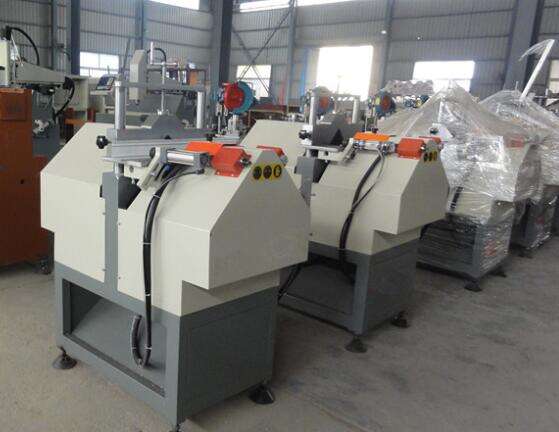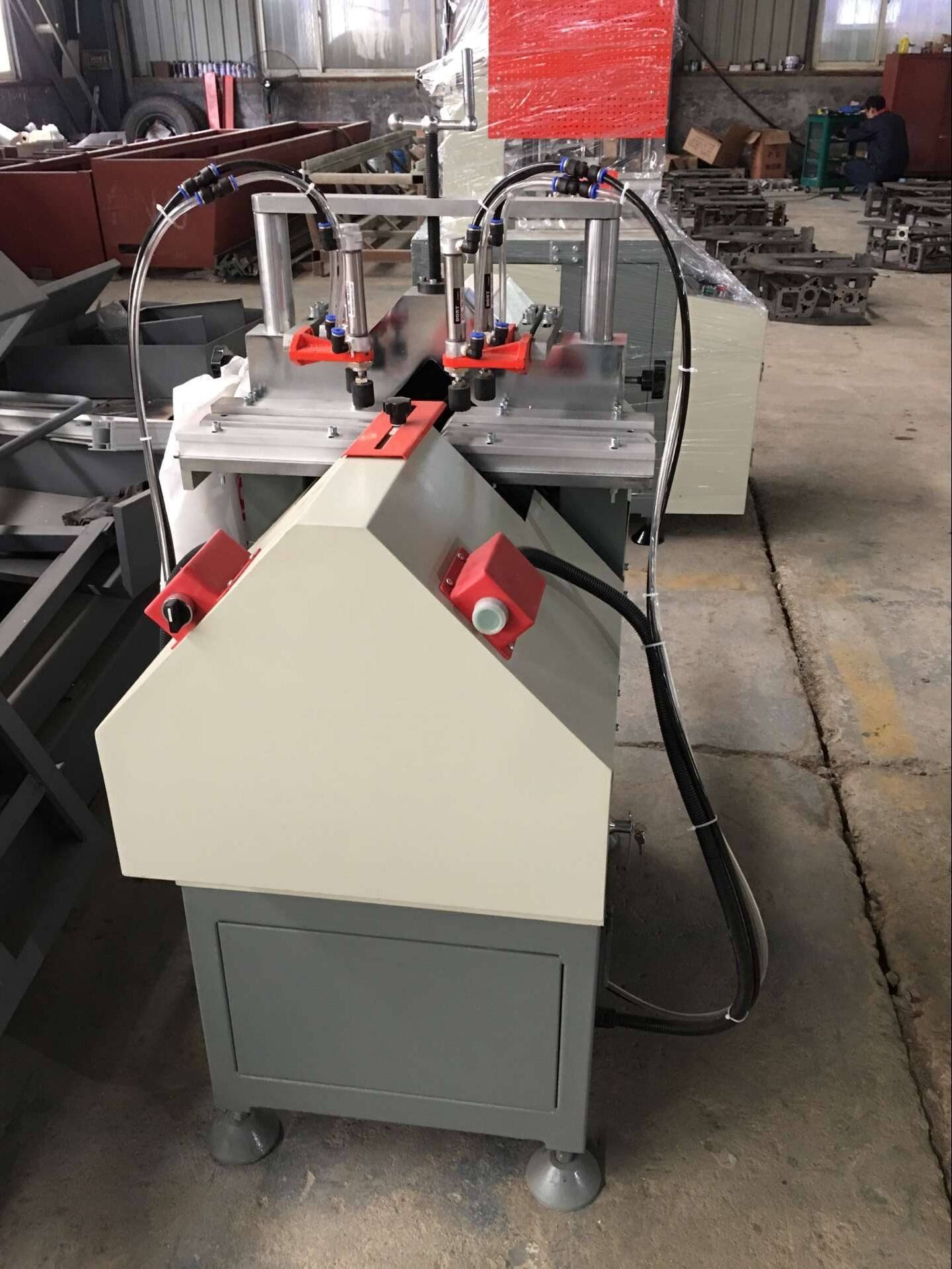What is a Glazing Bead Cutting Saw?
Glazing bead cutting saws are must-have tools for anyone working with window installations. They let workers slice those little plastic or metal strips called glazing beads at just the right angle every time. Without proper cutting, these beads won't hold the glass securely in place inside the window frame. When a saw cuts cleanly through the material, it makes all the difference in how well the window holds up over years of use. Most shops can't function properly without one of these specialized saws since accurate cuts mean fewer rework jobs and better finished products overall.
Core Components and Design Features
A glazing bead cutting saw basically has three main parts working together: blade, motor, and table. The blade itself is usually crafted from good quality steel that allows it to slice through materials accurately. Motors generally run at speeds close to 2800 RPMs, giving enough power for most jobs. The table holds everything steady while cutting happens, which makes all the difference when working on delicate projects. Many modern models come with adjustable speed options and comfortable hand grips that really help improve both accuracy and how long someone can work before getting tired. These little extras matter a lot when making multiple cuts over several hours. What's interesting too is what the saw is actually built from. Most manufacturers opt for strong metals like aluminum because they last longer without warping or breaking down after months of constant use in workshops.
Types of Materials It Processes

Cutting saws for glazing beads mainly handle materials such as uPVC and aluminum. The uPVC stuff stands out because it's pretty strong and keeps heat from transferring through windows, which is why so many window makers rely on it. What makes uPVC really good for windows is how it holds up against weathering over time without breaking down, giving those window parts lasting life. Aluminum works well too since it doesn't weigh much but still lasts forever, making it easier for workers to handle during installation. When working with these different materials, operators need to tweak things like cutting speed, accuracy levels, and watch out for blades wearing down faster than normal. Both materials show up all over the place in window production. They don't just hold glass panels in place either they actually help keep the whole window looking nice while still being structurally sound.
Role in Modern Window Manufacturing
Precision in uPVC and Aluminum Profiles
Getting those uPVC and aluminum profiles just right matters a lot in today's window manufacturing world. When manufacturers get their cuts accurate, products tend to be better quality overall and customers end up happier with what they buy. Research shows that when companies focus on precise cutting techniques, windows last longer and perform better too, which builds up customer confidence and helps grow business across different markets. The latest generation of glazing bead cutting saws are built to maintain tight tolerances so every single cut comes out consistent and matches what specs require. These machines come packed with things like variable speed controls and comfortable design elements that make for cleaner, faster cuts right according to what the industry expects from good craftsmanship.
Integration with CNC Aluminum Cutting Machines
When glazing bead cutting saws get paired up with those CNC aluminum cutting machines, something pretty remarkable happens in window manufacturing shops across the country. The combination brings automation into play, which means factories can crank out products faster while spending less on staff wages. Operators find themselves doing fewer repetitive tasks since the machines handle most of the heavy lifting. They just need to monitor things occasionally and make minor adjustments when needed. Real world testing at several plants shows that this setup cuts down errors significantly compared to older methods. Production lines run smoother too, getting more units off the assembly line each day. For shop owners worried about bottom line numbers, there's another perk worth mentioning: better product quality means fewer rejects, so materials don't go to waste as much. And let's face it, nobody wants their investment sitting around collecting dust instead of turning a profit.
Glazing Bead Saws vs. Complementary Machinery
Comparison with PVC Welding Machines
In window manufacturing shops across the country, glazing bead cutting saws and PVC welders play essential but different roles. The cutting saw handles those precise trims needed for glazing beads, getting them just right so they fit properly around glass panels. Meanwhile, the PVC welder does something completely different it bonds those uPVC profile pieces together using heat fusion techniques that create strong, durable joints. When manufacturers understand how these tools actually work in practice, they make better choices about equipment investments. Most experienced fabricators will tell anyone who asks that these two machines typically go hand in hand during production runs. The saw gets everything cut to size while the welder ensures all components stick together properly. This pairing cuts down on wasted materials and rework time, which means money saved at the end of the month. For small to medium sized operations looking to balance quality output with reasonable costs, having both machines available makes all the difference in day to day operations.
Synergy with Aluminium Bending Equipment
When manufacturers pair glazing bead cutting saws with aluminum bending equipment, they see real gains in both how fast things get made and how good the final products look. The way these tools work together makes window units much more accurate and consistent across batches. Factories that have implemented this setup report fewer mistakes during production runs, which cuts down on material waste and speeds up delivery schedules for customers. Industry insiders who've worked on factory floors know that getting different machines to talk to each other properly is crucial for maintaining tight tolerances that today's builders demand. What happens when everything clicks? Windows that fit perfectly in their frames without gaps or warping, satisfying both looks and structural requirements. Most shops find that investing time upfront to coordinate all these different pieces pays off big time later, giving them an advantage over competitors still struggling with older, less integrated systems.
Safety and Efficiency Best Practices
OSHA Compliance for Dust and Noise Control
When running glazing bead cutting saws, sticking to OSHA rules is absolutely necessary if we want to keep the shop floor safe. The regulations really stress out the need for good dust management and noise reduction because these things directly affect worker health. For dust issues, proper ventilation setups work wonders alongside those mask respirators everyone should wear anyway. As for noise levels, putting up some acoustic panels around machines plus mandatory earplugs makes all the difference. Check what OSHA reports show about this stuff too there have been way too many incidents where people got hurt simply because basic safety wasn't taken seriously enough. Companies that actually follow through with these safety protocols not only protect their staff but also see better productivity since fewer accidents mean less downtime and happier workers overall.
Optimizing Workflow to Reduce Material Waste
Cutting down on material waste when working with glazing bead cutting saws is all about smart workflow planning. Getting accurate measurements before making any cuts matters a lot, as does keeping those machines properly calibrated for consistent results. Most of the time, wasted materials come from simple mistakes like wrong measurements or machines set up incorrectly. Training staff better and doing regular maintenance goes a long way toward fixing these issues. Take XYZ Manufacturing for instance they slashed their waste levels after overhauling their cutting procedures. Their shop floor manager mentioned that even small changes in how workers approach each task made big differences in both bottom line numbers and what gets thrown away. When companies focus on streamlining their workflows, they end up saving money while being kinder to the environment too.
Maintenance and Long-Term Performance

Blade Calibration Techniques
Getting the blades properly calibrated makes all the difference when working with glazing bead cutting saws. When done right, calibration boosts cutting accuracy while making sure the machine lasts longer before needing replacement parts. Routine inspections and tweaks keep blades sharp and accurate, something every shop owner knows matters if they want consistent cuts day after day. Most experienced technicians recommend doing these maintenance checks during busy periods at the workshop. That way there's less disruption to workflow since nobody likes waiting around for repairs. Following what the manufacturer says about calibration updates helps avoid problems like blades getting out of alignment. Misaligned blades don't just cut poorly, they wear down faster too, costing money in both time and materials over the long run.
Preventing Wear in High-Volume Production
Equipment gets worn down over time in any busy manufacturing setting, though there are ways to handle this issue properly. Regular checks and replacing parts before they fail completely helps keep things running smoothly without unexpected stops. When companies skip these basic steps, they often face expensive shutdowns and lost productivity. Most plant managers will tell anyone who asks that sticking to a good maintenance schedule matters a lot. This includes simple tasks like lubricating moving components and keeping everything clean inside the machines. Big name manufacturers have seen firsthand how consistent care cuts down on breakdowns and keeps operations humming along efficiently. The bottom line? Investing time in preventive maintenance pays off big time for factories looking to maximize output while minimizing surprises during production runs.

